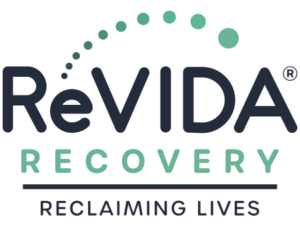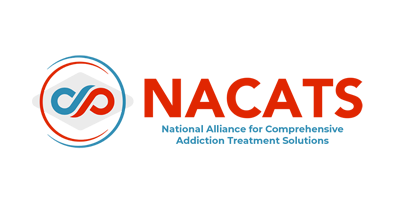
If you or someone you know has ingested heroin that’s been laced with fentanyl, the best-case scenario is an intense “high” followed by some hangover-like symptoms like headaches and nausea. Unfortunately, this wasn’t the case for over 2,500 Tennessee residents that died in 2021. Nor was it the case for the 67,325 Americans that died that same year. The reason for this? Even the smallest dose of illicit fentanyl can cause an overdose, leading to major health complications and even death.
At ReVIDA® Recovery we’ve seen too many preventable deaths happen because of the combination of heroin and fentanyl. With all of the resources available to those managing addiction, you’d think we’d be seeing a major decrease in the number of overdoses involving opioids. Why are we losing so many people to fentanyl in heroin? Let’s talk about what’s going on and how we’re working to prevent it.
Table of Contents
What Does it Mean When Heroin is “Laced” with Fentanyl?
When a substance has been “laced,” it means that another substance has been added to it in order to increase its effects. An example of this would be fentanyl-laced heroin. It takes a lot of work to make heroin from a poppy plant because of the purification process. The more “pure” heroin is, the more expensive it becomes to sell and distribute. On the other hand, a tiny amount of fentanyl mixed into heroin can create a similar “high.”
Dealers may lace heroin with fentanyl to save money, stretch out their inventory, or even to create repeat business. Fentanyl is much cheaper than heroin, and those who take it are highly likely to form an addiction. This increases the dealer’s profit margin over time.
How Do They Mix Drugs?
When pure heroin is delivered to the dealer, they must choose a cutting agent in order to expand their inventory. If they used 100% pure heroin, they wouldn’t be able to sell as much of it because it would be too expensive. It would also be difficult to dose that way. They usually cut a dose into 5ths and mix it with something that looks similar, giving their heroin a new purity rate of around 10-20% of active heroin. This is easier to sell and will allow the dealer to move more inventory.
Cutting agents aren’t usually considered “dangerous,” especially compared to fentanyl or other lacing agents. Common cutting agents for heroin include cornstarch, sugar, or even aspirin. They choose cutting agents that are cheap and easy to get from their local drug or grocery store.
In the case of lacing agents like fentanyl, a little goes a long way. A dealer will take a microscopic amount of fentanyl, crush it, and mix it into the heroin and other cutting agents.
How to Tell If Heroin Has Been Laced With Fentanyl
Dealers are not required to tell you if they’ve laced your heroin with fentanyl – heroin is not regulated because it’s completely illegal. It’s also illegal to sell any kind of drugs independently, especially fentanyl. In other words, everything your dealer is doing is illegal and they’re under no obligation to warn you of any possible dangers.
Fentanyl has no taste, smell, or distinguishing characteristics. It’s impossible to tell if heroin has been laced with fentanyl just by tasting, smelling, or looking at it. The only way to know for sure is to test the heroin with fentanyl test strips, which are widely available, usually free, and 100% legal. If you or someone you love is showing signs of a fentanyl addiction, you should always have fentanyl test strips on hand. They can fit pretty much anywhere including your purse, wallet, or car.
The Dangers of Heroin Laced With Fentanyl
As mentioned earlier, most individuals are unaware that their heroin has been laced with fentanyl. This causes them to take their usual amount of heroin, not knowing that it’s essentially “extra strength.” An overdose happens when too much of a substance has overwhelmed the body, causing it to stop functioning properly. Eventually, the organs begin to shut down and it becomes life-threatening.
An overdose isn’t the only danger surrounding heroin-laced fentanyl. Those who use this combination regularly risk developing a polysubstance use disorder, meaning they’re physically and psychologically dependent on two substances. Polysubstance use can cause a myriad of health complications including the development or worsening of mental health conditions, liver complications, kidney failure, respiratory distress, and more.
Risk of Fentanyl Overdose
Heroin and fentanyl are both opioids, which means they’re both central nervous system depressants. Taking them together is going to slow down the body and the way you breathe, think, and function.
A dose of fentanyl smaller than the tip of a ballpoint pen can be deadly when it’s mixed with heroin. In a hospital or clinical setting, fentanyl can be effective for pain management because it’s monitored and correctly administered. On the streets, all bets are off. Dealers can’t properly measure correct dosages of fentanyl. Even if they’re experienced in lacing drugs, they’re still prone to human error.
If someone is experiencing a fentanyl overdose, one or more signs are present:
- Blue nails or skin
- Shallow breathing
- Loss of consciousness
- Limp body
- Pinpoint pupils
- Gurgling or choking sounds
If you suspect that you or someone you care about is experiencing a fentanyl overdose, call 911 immediately. Thankfully, opioid overdoses can be reversed using Narcan® (Naloxone) when they’re caught in time. First responders carry Narcan® (Naloxone) and it’s also available in many stores, as well. If you or someone you care about is managing an addiction to opioids like fentanyl, it’s a good idea to keep this medication with you.
Getting Treatment For Heroin And Fentanyl Addiction
At ReVIDA® Recovery, we have seen firsthand how effective evidence-based recovery from fentanyl addiction can be. If you’re feeling like it’s impossible to stop using heroin, you aren’t alone. Countless others have been where you are and have found a way to heal. The safest and most effective way to find healing from an opioid use disorder is through evidence-based, compassionate care. We offer the kind of tailored support and treatment you and your loved ones need to move forward into a meaningful life of recovery.
Medication-Assisted Treatment (MAT)
While you’re here for MAT, you’ll be closely monitored by a compassionate and knowledgeable staff. Medications are available that can help in alleviating heroin and fentanyl withdrawal symptoms and guiding you safely into recovery. You’ll also have access to resources that can help you on your journey moving forward, including individual counseling, group counseling, and support groups. In an MAT program, we use medications alongside traditional therapy to guide you away from opioids and into a healthy life of recovery.
You’ll also have the option to move forward with our outpatient treatment program. If a higher level of care is warranted, we will provide referrals for a local inpatient or residential treatment program. Your clinician will go over all of your options to set you up for success.
Suboxone® (Buprenorphine) Treatment
Medication-assisted treatment, or MAT, is a safe and evidence-based way to treat OUD. At ReVIDA® Recovery, we support the use of Suboxone® (buprenorphine) because it has been proven to reduce cravings while working to prevent relapse. To receive Suboxone® (buprenorphine) treatment, you will have to be opioid-free for 24 hours.
Outpatient Rehab Services
We believe that both individual and group therapy are critical components in the treatment of OUD – especially if you’re looking for long-term recovery. This is a safe and supportive space where you will learn how to manage your triggers and create healthy coping mechanisms. Our behavioral healthcare team is composed of licensed therapists, certified counselors, care coordinators, and peer recovery specialists who are standing by and ready to help. If we can treat your heroin or fentanyl addiction where it started, at its roots, your chance of recovery is greater than if we were to simply treat your withdrawal symptoms.
At ReVIDA® Recovery, we’re standing by to help you reclaim your life from heroin and fentanyl. Recovery is possible, and you can start your journey to wellness whenever you’re ready. To learn more or to schedule an appointment, please call us today at 423-631-0432.
FAQs
What are the side effects of lacing heroin with fentanyl?
Most individuals are unaware that their heroin has been laced with fentanyl. This causes them to take their usual amount of heroin, not knowing that it’s essentially “extra strength.” An overdose is the most serious side effect of lacing heroin with fentanyl. Eventually, the organs begin to shut down and it becomes life-threatening.
How dangerous is it to lace heroin with fentanyl?
An overdose isn’t the only danger surrounding heroin-laced fentanyl. Those who use this combination regularly risk developing a polysubstance use disorder, meaning they’re physically and psychologically dependent on two substances. Polysubstance use can cause a myriad of health complications including the development or worsening of mental health conditions, liver complications, kidney failure, respiratory distress, and more.










